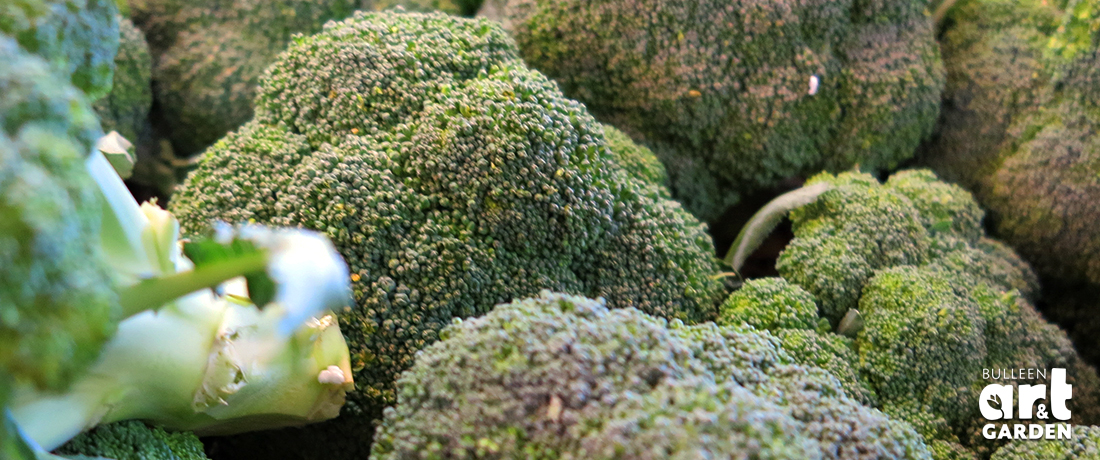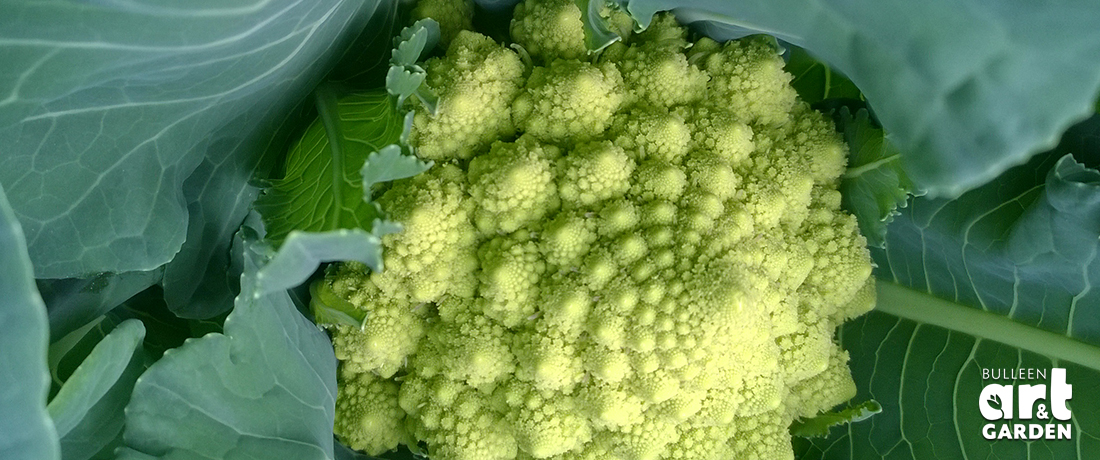
 Important note about plant availability. Important note about plant availability.There are hundreds of factsheets on our website provided for your information. Not all plants will be available at all times throughout the year. To confirm availability please call (03) 8850 3030 and ask for the nursery. |
Broccoli is a favourite for the autumn / winter vegie patch. It can be steamed, boiled, battered, stirfried, steamed with white sauce in side dishes, chopped into florets, boiled in stock or blended into tasty, nourishing soups. Broccoli is also packed with vitamins and freezes well after blanching.
Broccoli likes to grow fast, is a hungry feeder and needs regular watering. So save your rainwater for them and plant them into limed and manured soil to keep them happy and strong. Also watch out for hungry green caterpillars!
Broccoli is ready to harvest in 10-12 weeks from planting so for winter harvest, plant in late summer or EARLY autumn. Yes, we know it seems so early but it needs to be done or you’ll have to wait until spring to be eating them.
For spring harvest, plant mid-autumn – early winter. You can also plant again in late winter – early spring for early summer harvest.
Broccoli produces a large central head, followed by smaller side shoots when you harvest the centre. Dwarf Broccoli is also available, the central head is smaller and therefore takes less time to mature. Be aware though that the plant takes up just as much space in the garden. Height 40cm x Width 50cm.
All types of broccoli will produce side shoots but some are specially bred for their superior side-shooting tendencies like Brocolette, Green Sprouting Calabrese (Seed), Purple Sprouting Broccoli (Seed).
Choose a spot to plant in full sun that hasn’t had Brassicas (Cauliflower, Cabbage, Broccoli, Brussel Sprouts) planted in it the year before. Sprinkle some dolomite or garden lime on top, tip a heap of cow or sheep manure on then dig it all in. Alternatively, just dig in a heap of mushroom compost instead as it already contains lime. Le the soil rest for a week or two if you can, but otherwise, just make sure the manure is blended thoroughly before planting.
Keep well watered, stick your finger in to see if the soil is dry or not. Every 2-3 days in the autumn / winter should be just about right. Liquid feed or side dress with manure or organic fertiliser regularly.
While the weather is mild, the green caterpillars of the white cabbage moth are still out and about. They adore broccoli and can devour seedlings overnight so control this pest by inspecting the undersides of leaves regularly for the little yellow pointed eggs and squash them with your nail onto the leaf. Also, look out for chewed leaves and little dark green ‘balls’ which is caterpillar poo. That’ll help you find the caterpillars, they like to hide along the mid rib on the underside of the leaf. Squash them onto the leaf too, (gently fold the leaf over it and squish, please kill them quickly and thoroughly) this should prevent other caterpillars wanting to eat there. Would you eat food that had squashed people all over it?
As a safe and effective last resort, (as even environmentally friendly sprays should be used with discretion) spray your plants with Dipel or Success, which are both made from a naturally occurring bacteria that’s particularly harmful to caterpillars, but safe for other insects and mammals. Wait 3 days after spraying before picking for eating.
Broccolini
Okay, so you’re always hearing about Broccolini and similar words like, Broccoletti, or Broccolette. These are hybrids of your common Broccoli crossed with Chinese Broccoli.
It came about in the late 1980’s in Yokohama, Japan. The Sakata Seed Company are responsible for selling 80% of the Broccoli seed and being run by successful business men, they asked themselves: “How can we sell more Broccoli?”. Common Broccoli has a relatively small window for commercial growing due to its love of cool weather. However its cousin, the Chinese Broccoli, aka Gai Laan, or Chinese Kale, is much more heat tolerant, and if you know it at all, it has succulent, sweet edible stems and leaves, rather than flower heads.
When they crossed the two, they came up with what is known today as Broccolini.
It can be grown over a much longer period and has a very loveable sweet flavour somewhat between Asparagus and Broccoli, and the whole lot is eaten, making less waste and quicker preparation.
There the story goes. The “Broccolini” seed is nearly impossible to buy in the Australian gardener seed market and consequently the name “Brocolette” is appearing in nurseries and from what we understand is the same as Sakata’s form.
But still we have some confusion. As when someone asks for Broccoletti, we have two options for them, the oh so similar sounding “Broccolette” discussed above, or the “Rapa” Broccolis, which are sometimes known as “Broccoletti”. The two are totally different from one another in looks and taste. Further on, you’ll find out more on Rapa Broccolis.
Ways of distinguishing the different types of Broccolis:
For the sake of this factsheet I’ll say “True Broccoli”: These plants form a main head and after the main head is picked they will prolifically produce side shoots for harvesting over an extended period. These are sometimes called “Calabrese Broccoli’, with varieties like Di Cicco, Purple Sprouting, Green Sprouting, Green Comet, Green Emperor, and Green Dragon, just to name a few. (Purple Sprouting are hardier to cool weather). In this range you’ll also come across dwarf types e.g. Magic Dragon, Mini Broccoli. These also produce side shoots after the main head is cut off, but will be smaller in size. An excellent variety to grow if you need fast developing Broccoli.
Then you have Chinese Broccoli, which as explained earlier is mainly a leafy vegetable with edible stems, and can be cooked whole (stir fried with garlic is delicious). Other names include Gai-Laan, Chinese Kale, Kai-Laan, and depending on whether you’re in Thailand, Indonesia, China, Vietnam or Malaysia, it could be another name completely. It’s great for growing in warmer weather.

The Romanesco Broccoli (pictured above), an old Italian heirloom, which you’ll find are grown for their decorative central spiral head, must be picked before flowering shows or it’s too late. These need very cool weather to develop, so planting in late summer-early autumn is best.
Finally as mentioned before “Broccoli Rapa”, sometimes called Broccoletti is another variety that’s different from the rest. A super nutritious and traditional Italian vegetable grown for its tender stems, leaves and tiny button sized heads. The flavour is different to others, and is a mildly pungent and spicy. It does best when grown in cooler weather so planting late summer, or autumn is recommended. Eg. Cima De Rapa, Spring Rapini.
